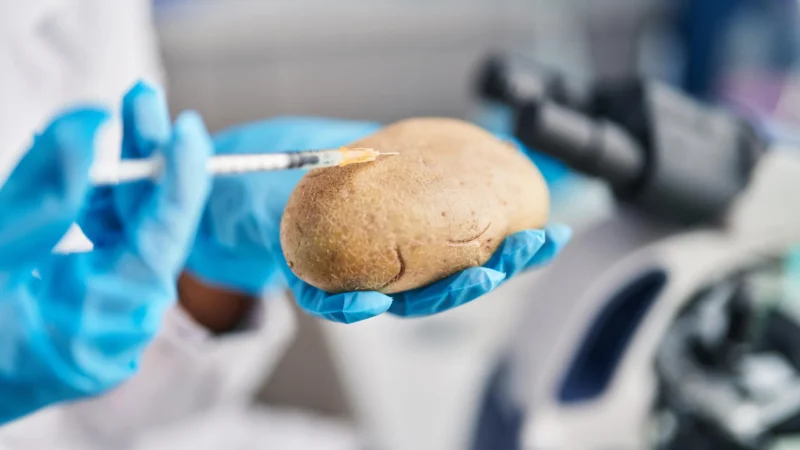Fast Facts
-
An international research team discovered that natural interbreeding between ancient wild tomato plants and potato-like species 9 million years ago led to the emergence of the modern potato, solving its long-mysteried origin.
-
The study reveals that a hybridization event introduced crucial genetic material, resulting in the development of tubers—essential for nutrient storage and enabling potatoes to adapt and thrive in diverse environments.
-
Researchers analyzed a comprehensive dataset of 450 genomes, identifying key tuber-forming genes from both parent species; the SP6A gene from tomatoes triggers tuber formation, while the IT1 gene helps grow underground stems.
- The evolution of tubers allowed potatoes to reproduce without seeds and rapidly expand into a variety of ecological niches, significantly contributing to the vast diversity of potato species existing today.
The Origins of the Potato: A Breakthrough Discovery
Scientists have long puzzled over the origins of the potato. This vital crop, essential to global food supply, remains shrouded in mystery. Now, an international research team has unveiled the potato’s origins through advanced genetic analysis. The study reveals that ancient interbreeding between wild tomato plants and potato-like species from South America, approximately 9 million years ago, gave rise to the modern potato. Researchers analyzed 450 genomes, leading to a clearer understanding of potato evolution. The findings illuminate how hybridization events can spur the development of new traits and, ultimately, new species.
This groundbreaking research can reshape our understanding of agricultural practices. It illustrates the significance of genetic diversity in crop evolution. With food security becoming an increasing global challenge, insights from this study could provide pathways for enhancing potato resilience and adaptability. Furthermore, the potato’s unique ability to reproduce through tubers offers a practical advantage, allowing these plants to thrive under challenging ecological circumstances.
A Tuber’s Evolutionary Advantage
The evolution of the tuber in potatoes marks a critical achievement in plant adaptation. Tubers serve as nutrient storage, enabling potatoes to flourish in diverse environments. This adaptability has allowed potatoes to colonize various ecological niches, from milder grasslands to high-altitude meadows. The research team identified key genes responsible for tuber formation, pinpointing their dual origins from both tomatoes and their potato-like ancestors. Such genetic insights can inform breeding programs aimed at developing more resilient potato varieties.
Understanding the potato’s journey strengthens its role in our shared human experience. As one of the world’s most consumed crops, the potato has the potential to feed billions. Hence, the practical implications of this research extend beyond academic curiosity. By harnessing the potato’s evolutionary advantages, we can address food shortages and ensure nutritional access for future generations. This discovery not only resolves a centuries-long mystery but also highlights the intricate connections between evolution, agriculture, and human survival.
Discover More Technology Insights
Stay informed on the revolutionary breakthroughs in Quantum Computing research.
Explore past and present digital transformations on the Internet Archive.
TechV1

